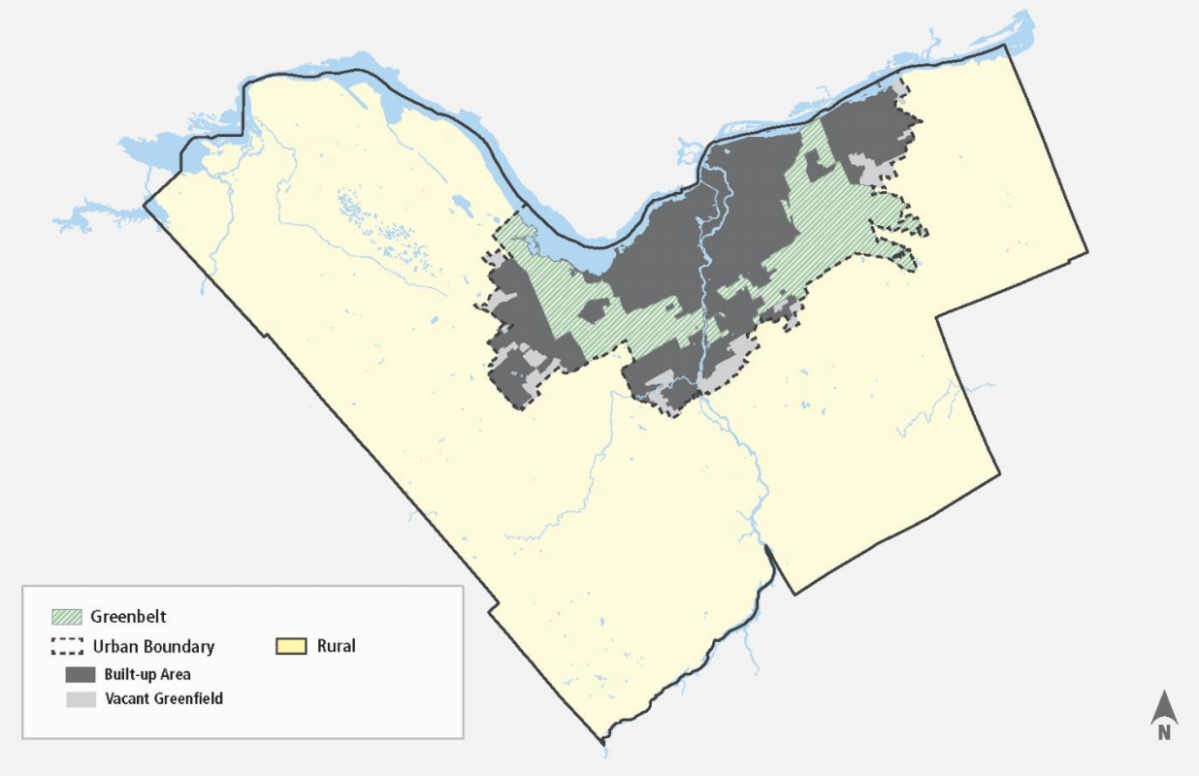Ottawa took the first step towards expanding its urban boundary on Tuesday, as a joint committee voted in favour of staff’s recommendation to add hundreds of hectares of housing supply from undeveloped rural lands to meet the city’s expected growth targets in the next 25 years.

The combined planning and agriculture and rural affairs committees voted 10-1 in favour of what city staff called the “balanced” approach, which will see 1,350-1,650 hectares of housing and employment lands added to Ottawa’s urban lands.
Staff argued the extra land is needed to accommodate the 400,000 new residents Ottawa is projected to welcome by 2046; 40 per cent of population growth will be absorbed by new builds on Ottawa’s existing and expanded development land while 60 per cent will need to be fulfilled through intensification.
Ottawa also must maintain a minimum 15-year housing supply at all times under provincial policy standards.
The joint committee’s vote came after three full days that saw more than 100 virtual delegations and more than 27 hours of debate between concerned citizens, developers, activists, other stakeholders and Ottawa councillors.
The decision still needs approval from city council, which will consider the topic at its next meeting on May 27.
The urban boundary expansion is a pivotal piece of Ottawa’s official plan — the master document that guides development in the nation’s capital.

Some councillors took umbrage during Tuesday’s meeting that staff could not provide fully costed estimates for the balanced plan or two other proposed scenarios, one of which would have seen Ottawa fulfill its projected housing demands solely through intensification.
Stephen Willis, the city’s head of development, told the committee that staff didn’t have the resources to model each of the proposed scenarios, but would provide the infrastructure costs and other relevant data associated with whichever option councillors choose later this fall as part of the official plan review.
Kitchissippi Coun. Jeff Leiper, an advocate of the intensification-only plan, was the sole dissenting vote on Tuesday.
“I can’t support it,” Leiper said.
- Alberta to overhaul municipal rules to include sweeping new powers, municipal political parties
- Canada, U.S., U.K. lay additional sanctions on Iran over attack on Israel
- Trudeau says ‘good luck’ to Saskatchewan premier in carbon price spat
- No more ‘bonjour-hi’? Montreal mayor calls for French only greetings
He argued that, while selling residents on the virtues of infill is difficult, expanding the urban boundary will cost them “more in the long-term” when it comes to taxes needed to build amenities in new neighbourhoods in addition to the climate change impacts associated with the transportation demands of suburban development.
He spoke in favour of building more “15-minute neighbourhoods” with easily accessible amenities, though other councillors argued that a motion to limit expanded lands to those close to planned transit hubs would meet that planning goal.
West Carleton-March Coun. Eli El-Chantiry also added a motion to protect prime agricultural land from consideration for development.
River Ward’s Riley Brockington put forward a motion to increase Ottawa’s share of intensification to 70 per cent rather than staff’s proposed 60 per cent, but the idea was shot down 8-3.
Also rejected was a motion from Leiper on behalf of Capital Coun. Shawn Menard to put off consideration of up to 369 hectares of land proposed for employment lands, as staff hadn’t yet conducted the studies needed to know specifically how much area will be needed.
Though staff indicated they were ambivalent to the motion, it was also shot down 8-3.
Rideau-Goulbourn Coun. Scott Moffatt argued that while Ottawa does need to intensify, the urban boundary must be pushed in the near-term to give the city time to ramp up its intensification rates, which are currently targeted at 51 per cent.
“That change won’t happen overnight,” he said. “We need time to have our communities prepared for this kind of change.”
Moffatt said that as the city develops its zoning bylaws in the coming years, if it implements infill well, this could very well be the last urban boundary expansion Ottawa needs to make.




Comments